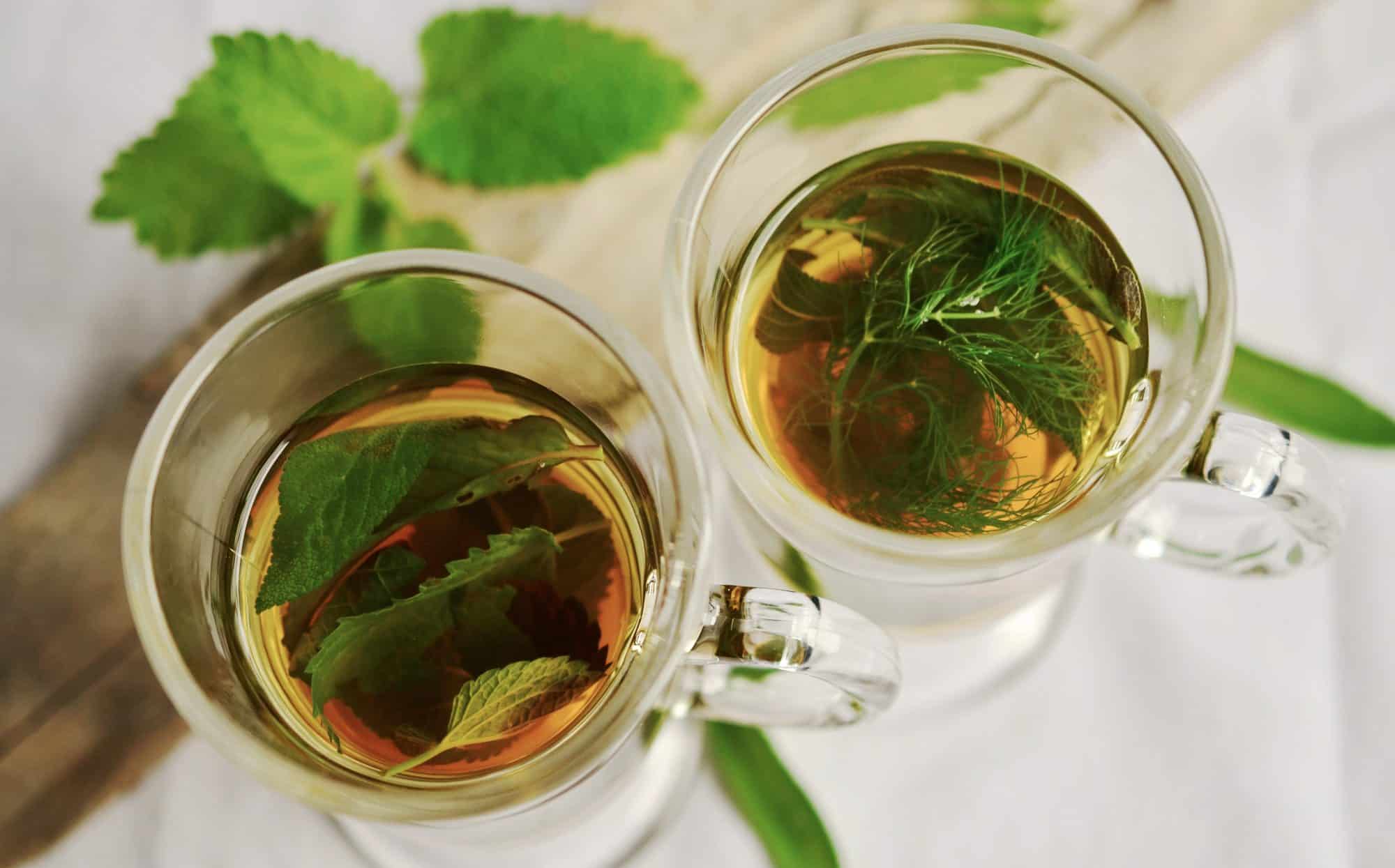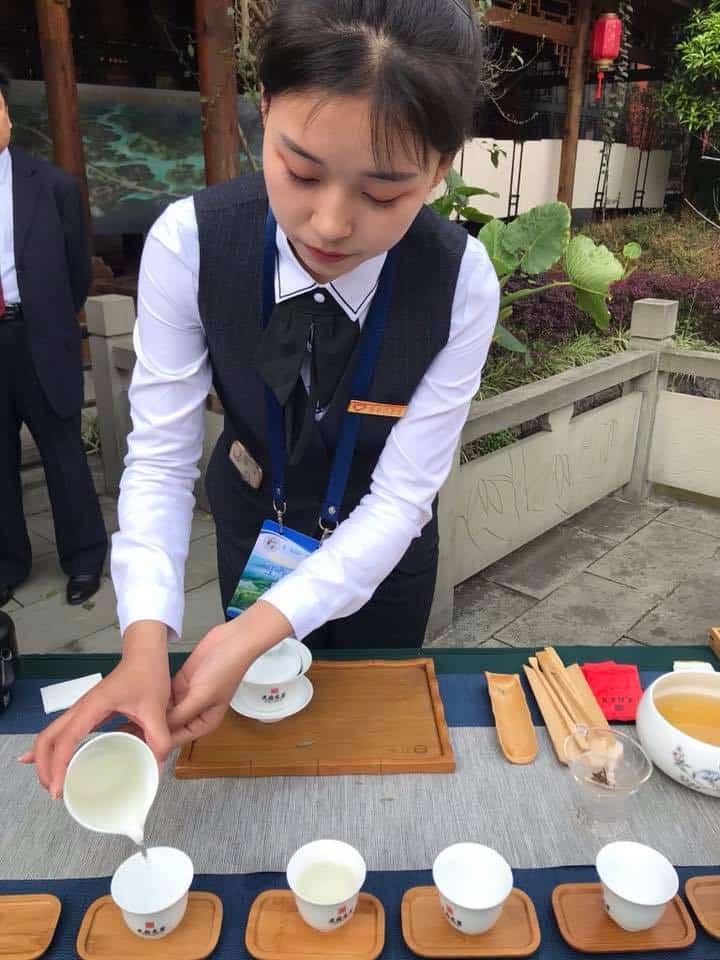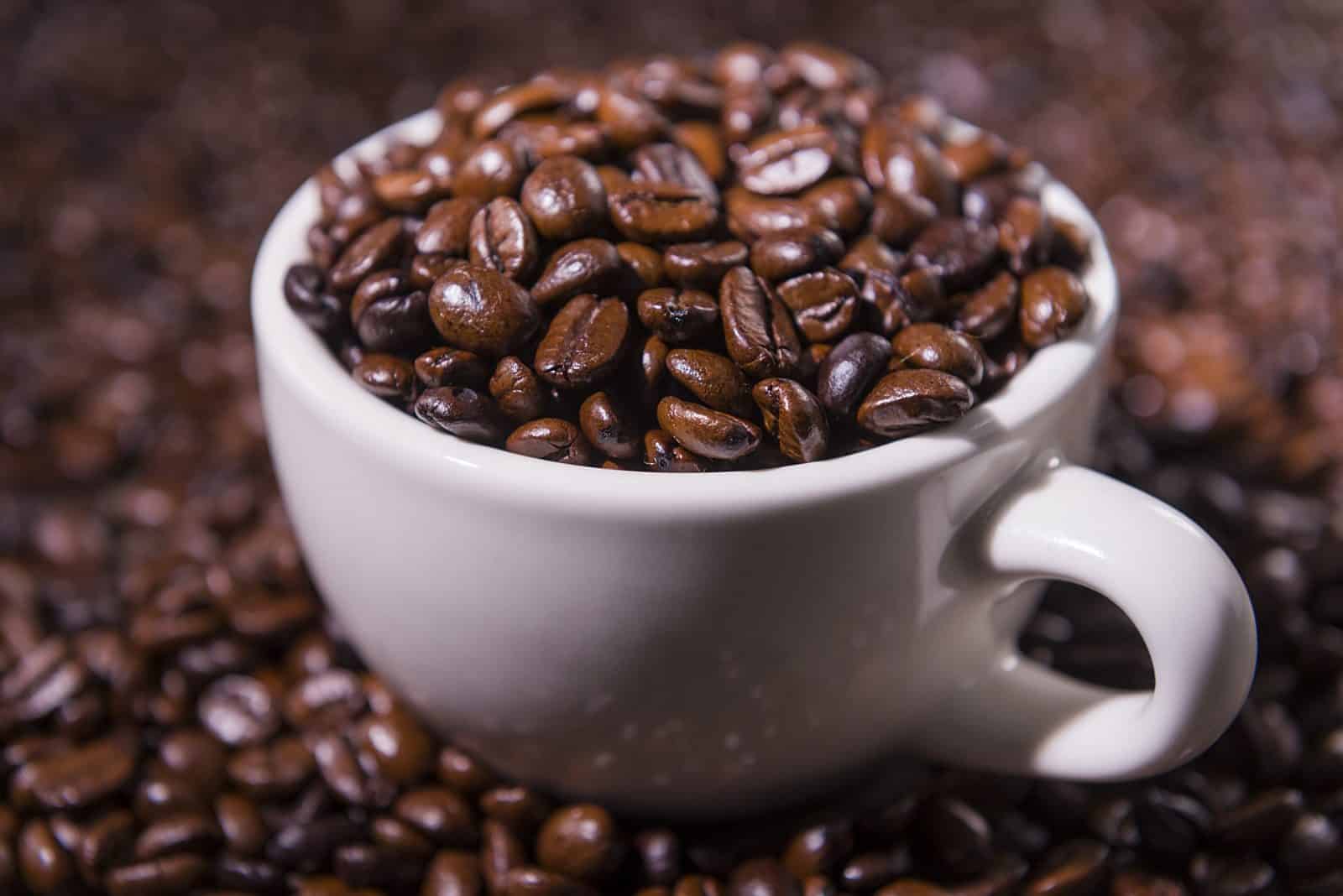My travels began (again) at 9am on 20th September when I was collected by my taxi and taken to Manchester Airport for flights to Schiphol, Beijing and finally Shantou. A total of 17 hours in the air not including transfers, with a total journey time of about 26 hours. When I arrived in Beijing I was glad to receive a WeChat message from Ian Gibbs the Chairman of the International Tea Committee who was also in the airport and we completed the final four hour flight together. Needless to say when I arrived at Shantou, Meizhou’s main airport, it was very gratifying to be collected with the cordiality and kindness that the Chinese always offer. We were met by two beautifully dressed young ladies who asked us to accompany them to a large and beautifully appointed VIP waiting area. They took our passports, checked us through security and fetched our cases whilst we sat drinking a cup of tea and enjoying the far comfier seats in the VIP area than were in the aeroplanes. We were then introduced to our individual translators. All of the translators provided for the entire conference were students studying for degrees in English Language. Although at the conference there were 30 countries represented English is used as the lingua franca. Each student had chosen an English name and my young translator introduced herself very politely to me as Grace. Once our cases had been collected we were given back our passports and escorted to the MPV which took us the final leg of our journey approximately 1 hour by road to the Hotel and Conference Centre which had been especially built for this event.
We were the last two guests for the Conference to arrive and upon arrival which was about 7pm Chinese time we were given 30 minutes to go to our rooms, shower and change into formal clothes as our hosts had organised a gala opening dinner that evening. We were all amazed to learn that the whole project including the construction of the 15km road that wound up the Han Mountain, the electricity and gas infrastructure, telephone network and the entire Hotel and Conference complex, all the staff training, and every detail required to present a polished and professional service to the delegates and guests, was achieved in SIX MONTHS! This is a testament to the drive and organisation of the Chinese people.
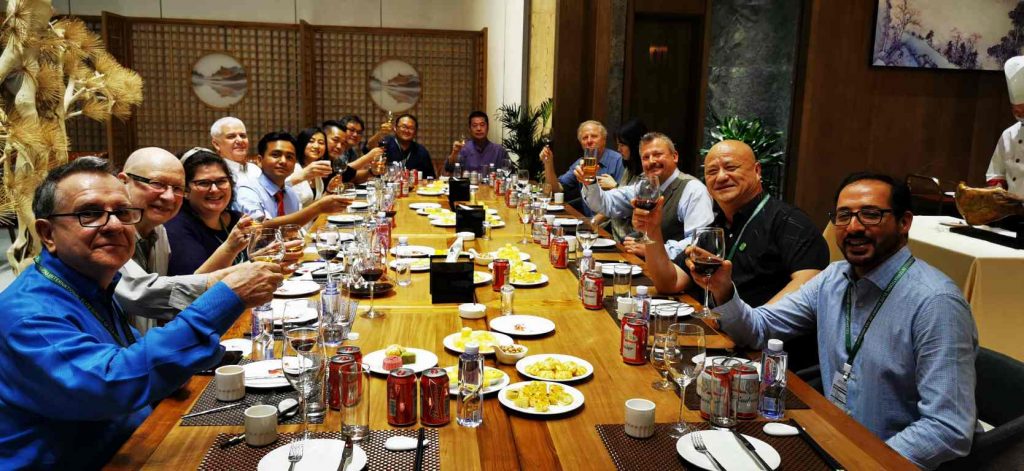
Having been awake by this time for approximately 30 hours I was ready to relax but meeting all my friends from all over the world at the banquet really did wake me up and a thoroughly enjoyable time was had by all. I was particularly glad to hear a Northern voice in the middle of all the different accents from around the world, so I thought I’d better go and investigate. The owner of this voice was a Mr David Lyons from Canberra, Australia, who is the founding Director of the Australian Tea Cultural Seminar and a well-known tea consultant and educator throughout Australia. However, David, hasn’t lost his Northern accent despite having lived in Australia since 1996 and it was a real pleasure to spend time with a fellow Northerner over the following few days.
After the banquet had finished approximately half of the party were invited up to the seventh floor of the hotel which is where the lounges were situated. Having already dined heartily we were somewhat dumbfounded to find more food set out for us but this time with alcoholic drinks and we sat down again and nibbled to the repass that was before us which included a Chef carving wafer thin slices of Iberico Ham which is a huge imported delicacy in China. Needless to say by about 11pm I was dog-tired and made my excuses and went to bed.
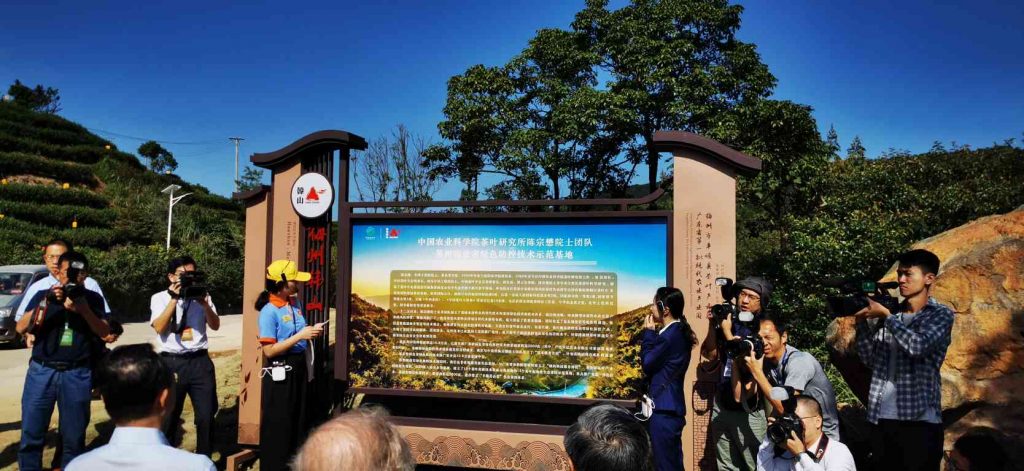
The idea of the whole event was to celebrate the Harvest Festival in Meizhou and also for a Conference relating to tea business, tea technology and tea culture and China’s plans for its enormous tea market place for the year ahead.
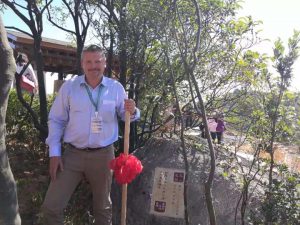 The following day (22 September) I was up early and enjoyed a breakfast of dumplings, rice and tea as we were to leave for a tea bush planting ceremony that had been organised as part of the event. Three guests, David Lyons, Ian Gibbs and me, were to plant three tea bushes in designated areas of the tea estate (which the Chinese called Celebrity Tea!) When we arrived at our plots we saw a brand new spade with a red ribbon tied around it, a young tea bush in a bucket of water and a watering can. At the side of each tea bush was a huge rock into which had been carved in both Chinese and English our names, who we were and the date we were to plant the bush.Happily, with the addition of a little water, the hard red earth soon became easy to handle and digging an 18 inch hole for my tea bush and its roots was not an onerous task. Within 10-15 minutes my tea bush was planted, watered and properly covered with earth. I must say it was very peculiar to be doing gardening at 930metres above sea level, in China, with an entourage of photographers clicking away as I worked. I hope my tea bush will flourish and provide tea for many years to come for visitors to this amazing place.
The following day (22 September) I was up early and enjoyed a breakfast of dumplings, rice and tea as we were to leave for a tea bush planting ceremony that had been organised as part of the event. Three guests, David Lyons, Ian Gibbs and me, were to plant three tea bushes in designated areas of the tea estate (which the Chinese called Celebrity Tea!) When we arrived at our plots we saw a brand new spade with a red ribbon tied around it, a young tea bush in a bucket of water and a watering can. At the side of each tea bush was a huge rock into which had been carved in both Chinese and English our names, who we were and the date we were to plant the bush.Happily, with the addition of a little water, the hard red earth soon became easy to handle and digging an 18 inch hole for my tea bush and its roots was not an onerous task. Within 10-15 minutes my tea bush was planted, watered and properly covered with earth. I must say it was very peculiar to be doing gardening at 930metres above sea level, in China, with an entourage of photographers clicking away as I worked. I hope my tea bush will flourish and provide tea for many years to come for visitors to this amazing place.
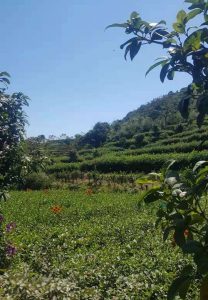
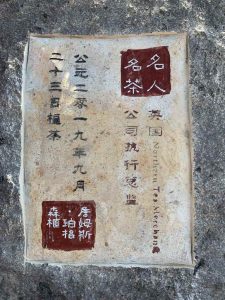
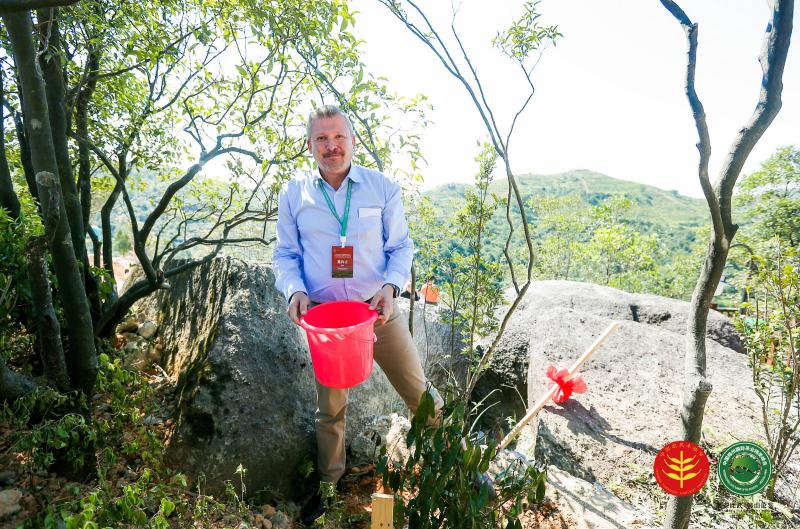
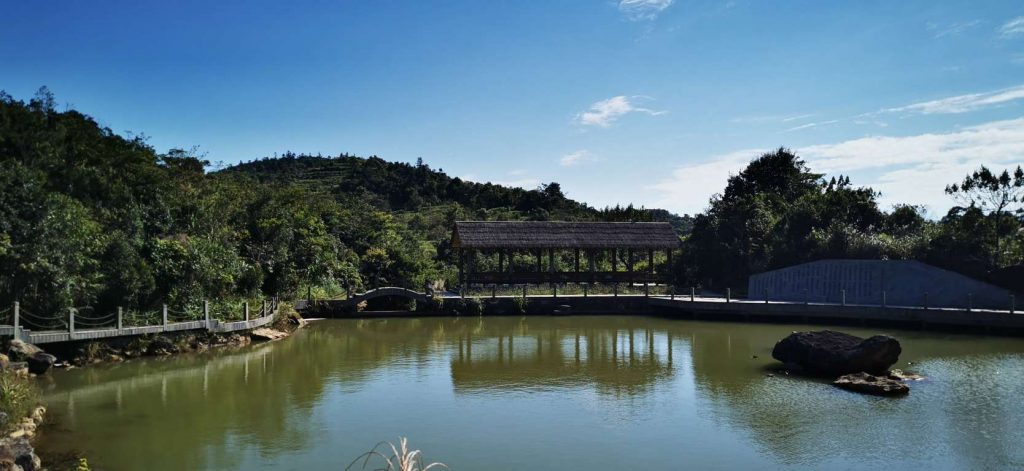
The whole group was then taken a little way down the mountain to our Conference Centre and Exhibition Hall. We eagerly entered the exhibition for not only the amazing tea but the fruit and vegetables that would be on offer from this fertile area of China.
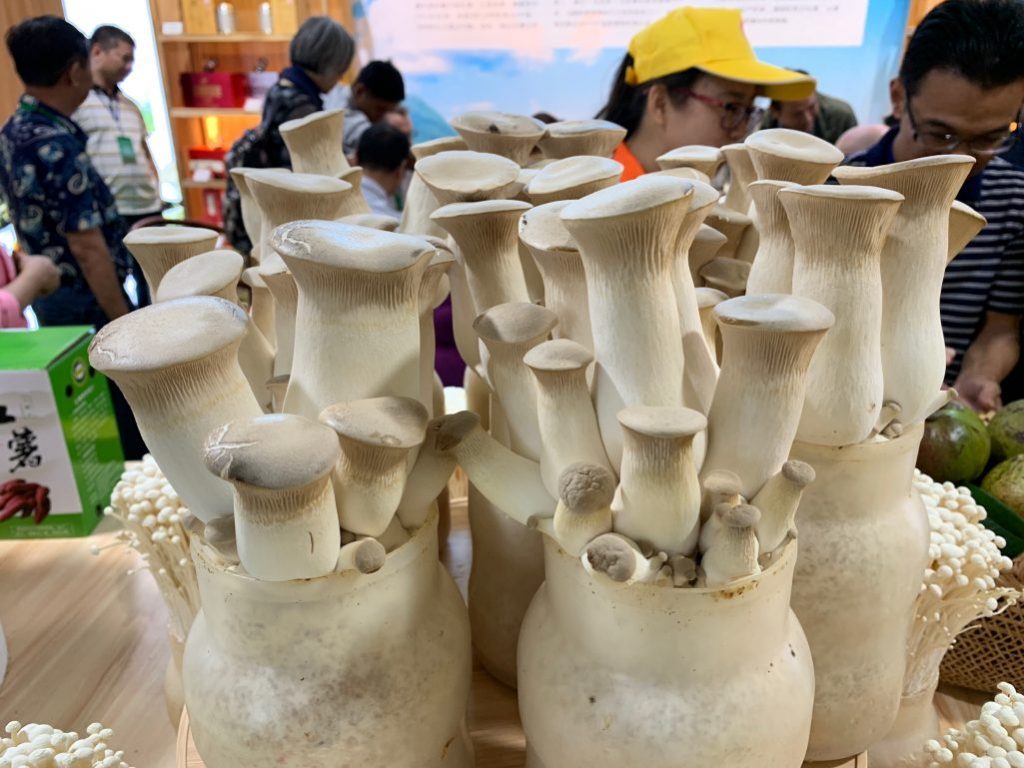

After having visited the exhibition we were escorted down the mountain for lunch, which we had to eat fairly quickly as a live nationally televised conference had been arranged to start at 2pm sharp. I had been given a sheet of paper earlier that morning with questions that would be directed at me and also a copy of the speech which was to be given by Professor Yu Lu, who opened and MC’d the event. The press conference went very smoothly and three of us were selected for live television interviews on CCTV, the national Chinese television network.
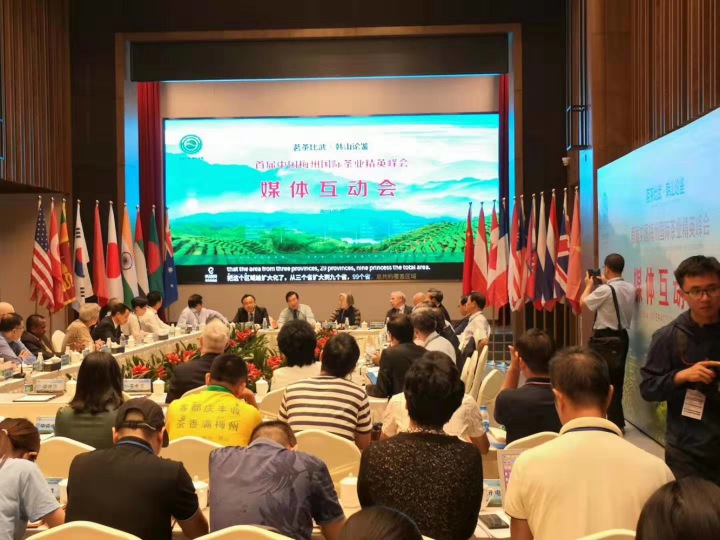
After the press conference we were then taken back up the mountain for the opening ceremony for the conference itself. This ceremony with its accompanying speeches lasted a further two hours and it was lovely to hear speakers from the UK, Europe, Sri Lanka, Nepal and China amongst others on subjects such as ‘Three ways of making peoples lives better with tea’, ‘Smart tea gardens’, ‘Tea development in Jaiyun’, ‘Use of 5G technology in tea estate management’ and ‘The paradigm shift of the Chinese Tea Industry’.
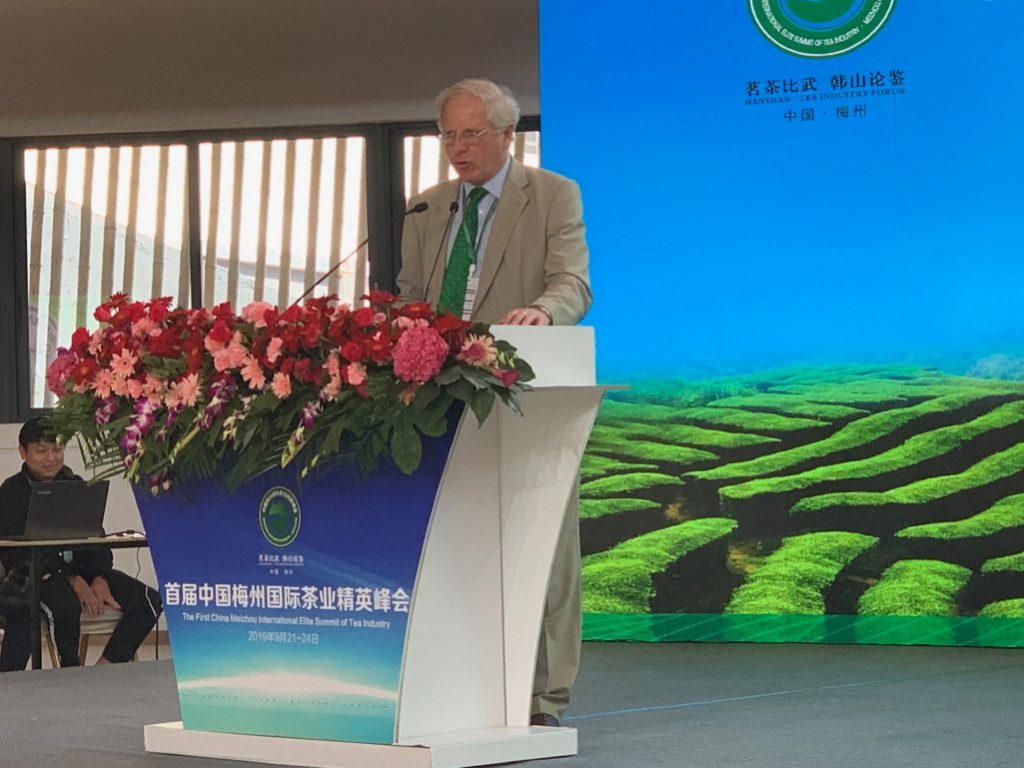
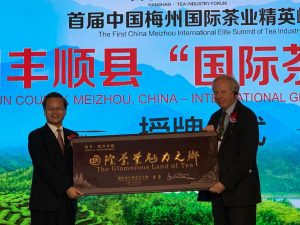


We were then taken back to the hotel and told to change into casual formal attire as yet another celebratory banquet was being prepared and served in the Conference Centre we had recently vacated. Needless to say the banquet was a very extravagant affair where not only were excellent quality and rare dishes being placed in front of us, this was also accompanied with an amazing stage show with dancers, marionettes, artists and singers.
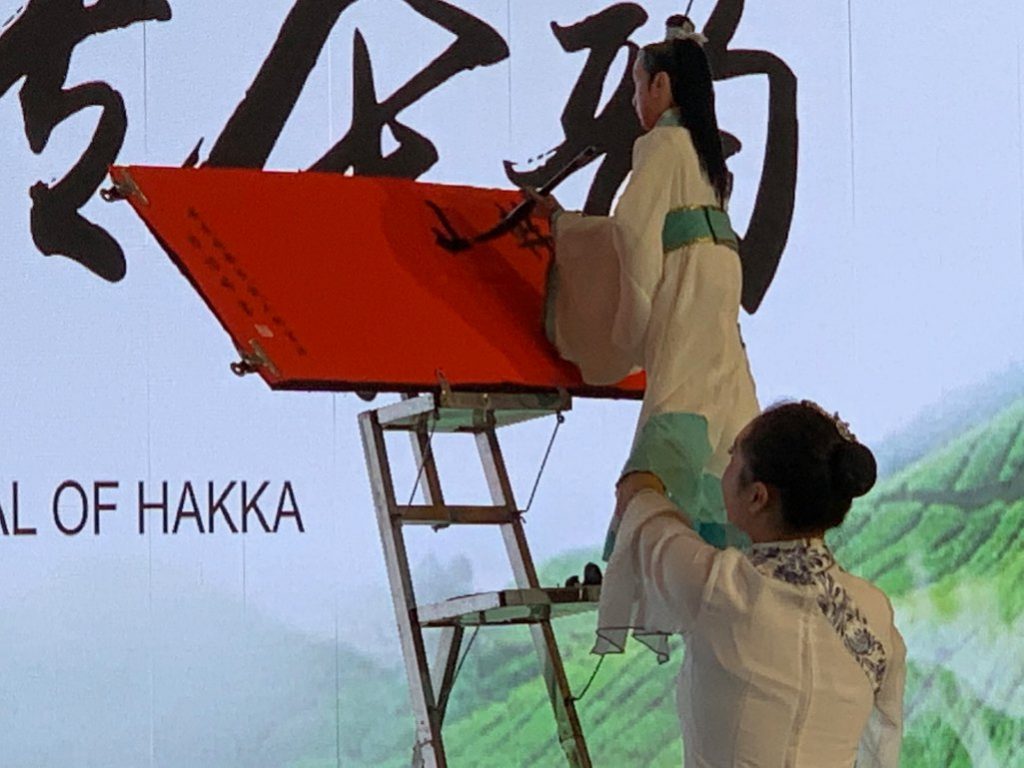
 The following morning (23 September) was the open air Harvest Festival event which was nationally televised. It was an amazing show with Chinese TV stars, beautifully choreographed stage shows, patriotism inspiring themes all of which required significant audience participation. We were all given a bright orange polo shirt and a yellow baseball cap to wear, a plastic tea bush branch and a Chinese flag which we were instructed to wave or hold in the air as a salutation to the actors and the dancers on stage. From the outside looking in, it was like mixture of a Harvest Festival Church Service, a rock concert and a grand state occasion!
The following morning (23 September) was the open air Harvest Festival event which was nationally televised. It was an amazing show with Chinese TV stars, beautifully choreographed stage shows, patriotism inspiring themes all of which required significant audience participation. We were all given a bright orange polo shirt and a yellow baseball cap to wear, a plastic tea bush branch and a Chinese flag which we were instructed to wave or hold in the air as a salutation to the actors and the dancers on stage. From the outside looking in, it was like mixture of a Harvest Festival Church Service, a rock concert and a grand state occasion!
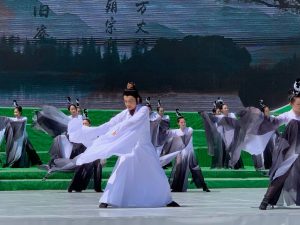

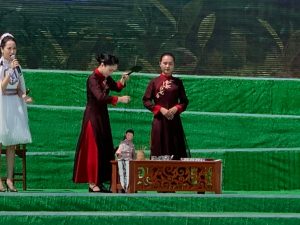

The grand event finished at about midday and after a quick lunch it was time to return to the Conference Centre where the international guest speakers were all scheduled to give their key note speeches with further topics of great interest including, global tea production statistics, tea and calligraphy, integration of tea culture into daily life and, a subject that is of great concern to me, tea genome studies. I was asked several questions during the Q & A session relating to the UK’s stance on several of the topics discussed, as well as Brexit… I was able to reassure my questioners that British business and the UK as a whole will continue to trade, consume and process tea from all over the world, in spite of our politicians best efforts to haphazardly plod through the minefield that has become our exit from Europe. That evening we were allowed an early night and I was glad to get into my bed about 8:30pm and sleep soundly for the whole night.
The following morning after breakfast there was one last job for us all to do which was to ratify the event and collectively describe what had happened and what had been decided by the Chinese government based on the input of the delegates from Australia, Austria, Bangladesh, Canada, China, France, India, Indonesia, Japan, Malaysia, Morocco, Nepal, Russia, South Korea, Sri Lanka, Thailand, United Arab Emirates, United Kingdom, United States of America and Vietnam. This document was then produced and signed by four senior members of central government as we watched.
By midday the final ceremony had concluded and we were taken back to the hotel for a very quick lunch before departing in coaches and individual cars for our various destinations around the world. One final and enduring image I have is driving back down the mountain with my driver on my way to Shantou airport. The first question I was asked in the car was where I was from, so after I’d explained I was from the UK, he asked what music I liked. I always find it best on these occasions to say “I like lots of music what type of music do you like?” At this my driver responded that he liked Linkin Park and we continued to drive down the mountain with some of the most beautiful scenery with the amazing vocals and heavy guitar riffs of the Californian Metal Band.
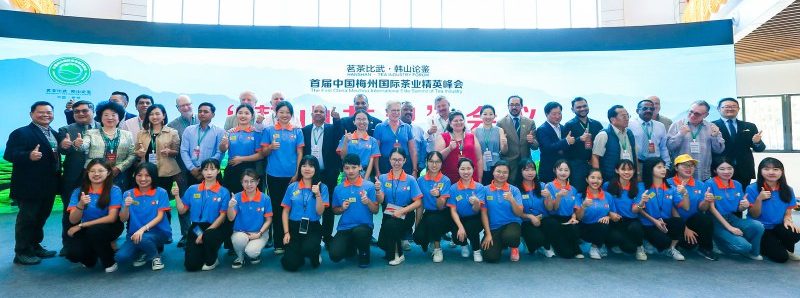
This trip whilst short was absolutely fascinating, although technical and has without a doubt increased my knowledge about tea, technology, culture and politics. All of which will help me to further enjoy running a tea business and being involved in the wonderful global tea trade.
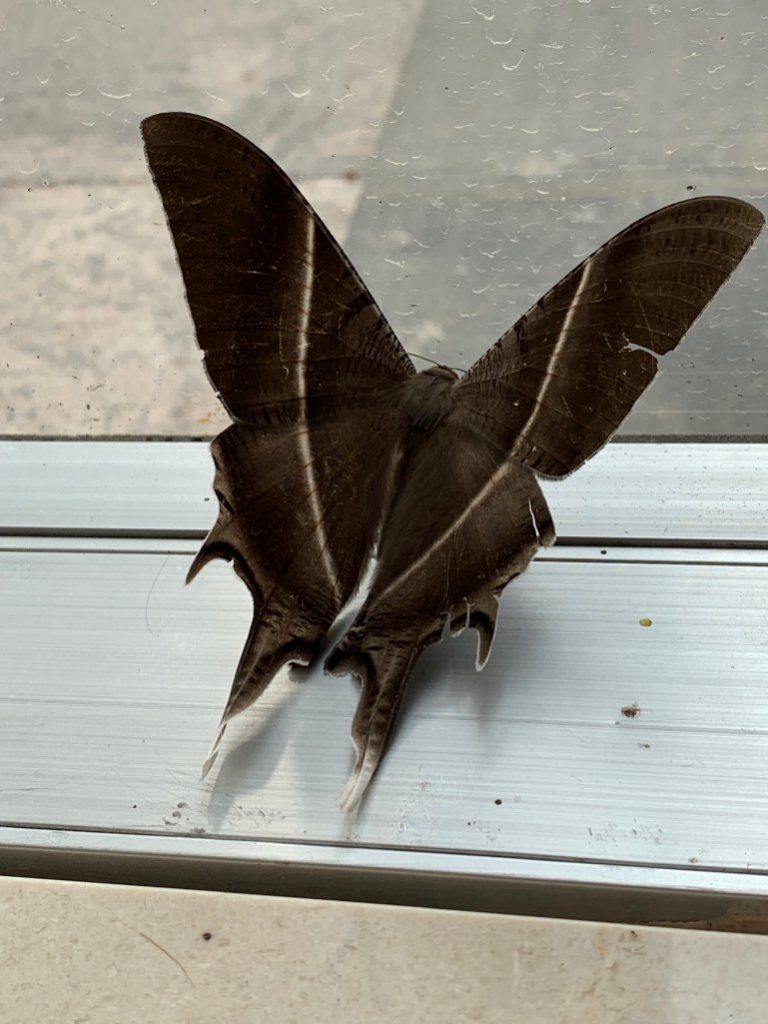
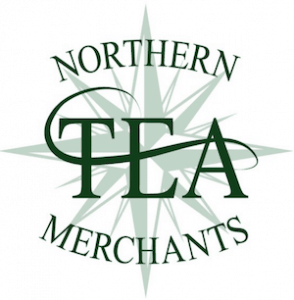

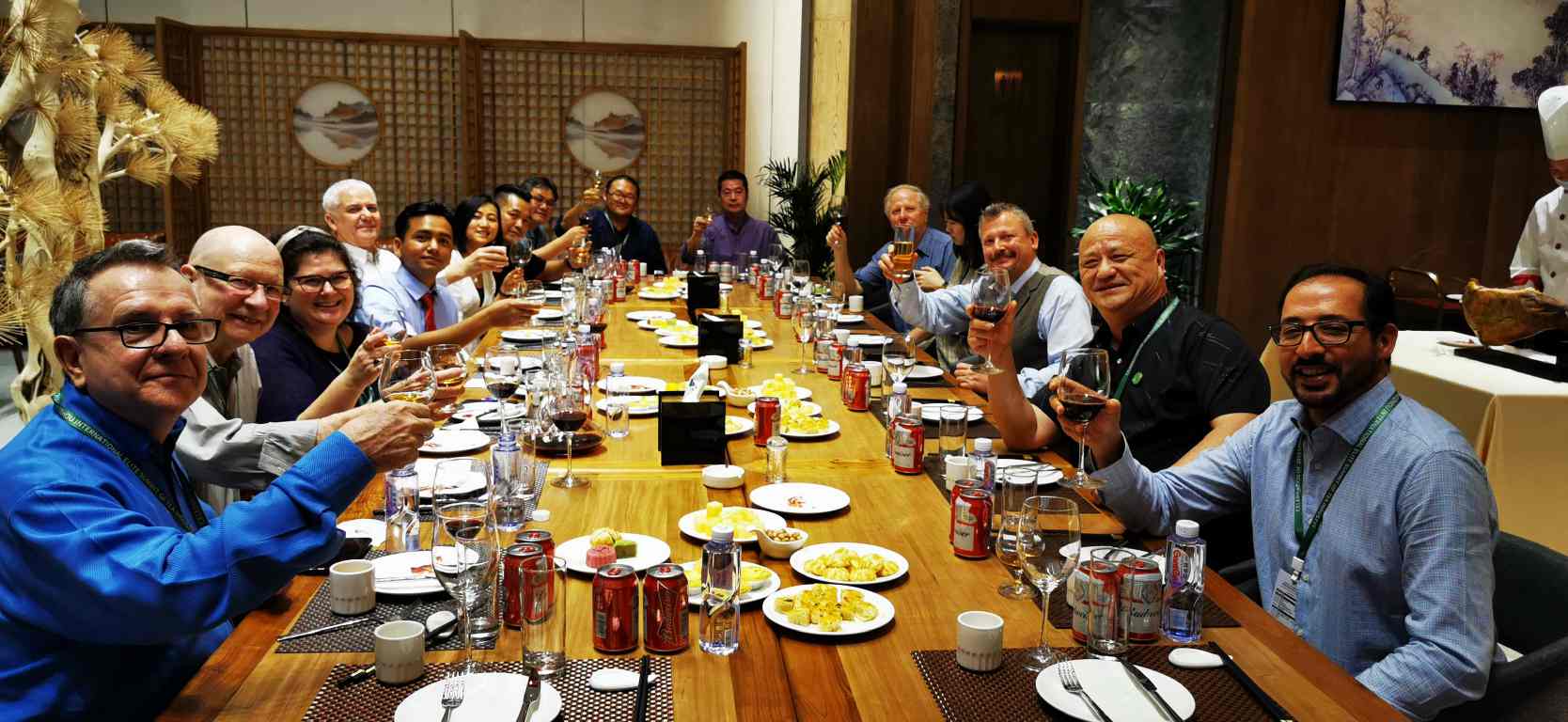


 The following day (22 September) I was up early and enjoyed a breakfast of dumplings, rice and tea as we were to leave for a tea bush planting ceremony that had been organised as part of the event. Three guests, David Lyons, Ian Gibbs and me, were to plant three tea bushes in designated areas of the tea estate (which the Chinese called Celebrity Tea!) When we arrived at our plots we saw a brand new spade with a red ribbon tied around it, a young tea bush in a bucket of water and a watering can. At the side of each tea bush was a huge rock into which had been carved in both Chinese and English our names, who we were and the date we were to plant the bush.Happily, with the addition of a little water, the hard red earth soon became easy to handle and digging an 18 inch hole for my tea bush and its roots was not an onerous task. Within 10-15 minutes my tea bush was planted, watered and properly covered with earth. I must say it was very peculiar to be doing gardening at 930metres above sea level, in China, with an entourage of photographers clicking away as I worked. I hope my tea bush will flourish and provide tea for many years to come for visitors to this amazing place.
The following day (22 September) I was up early and enjoyed a breakfast of dumplings, rice and tea as we were to leave for a tea bush planting ceremony that had been organised as part of the event. Three guests, David Lyons, Ian Gibbs and me, were to plant three tea bushes in designated areas of the tea estate (which the Chinese called Celebrity Tea!) When we arrived at our plots we saw a brand new spade with a red ribbon tied around it, a young tea bush in a bucket of water and a watering can. At the side of each tea bush was a huge rock into which had been carved in both Chinese and English our names, who we were and the date we were to plant the bush.Happily, with the addition of a little water, the hard red earth soon became easy to handle and digging an 18 inch hole for my tea bush and its roots was not an onerous task. Within 10-15 minutes my tea bush was planted, watered and properly covered with earth. I must say it was very peculiar to be doing gardening at 930metres above sea level, in China, with an entourage of photographers clicking away as I worked. I hope my tea bush will flourish and provide tea for many years to come for visitors to this amazing place.











 The following morning (23 September) was the open air Harvest Festival event which was nationally televised. It was an amazing show with Chinese TV stars, beautifully choreographed stage shows, patriotism inspiring themes all of which required significant audience participation. We were all given a bright orange polo shirt and a yellow baseball cap to wear, a plastic tea bush branch and a Chinese flag which we were instructed to wave or hold in the air as a salutation to the actors and the dancers on stage. From the outside looking in, it was like mixture of a Harvest Festival Church Service, a rock concert and a grand state occasion!
The following morning (23 September) was the open air Harvest Festival event which was nationally televised. It was an amazing show with Chinese TV stars, beautifully choreographed stage shows, patriotism inspiring themes all of which required significant audience participation. We were all given a bright orange polo shirt and a yellow baseball cap to wear, a plastic tea bush branch and a Chinese flag which we were instructed to wave or hold in the air as a salutation to the actors and the dancers on stage. From the outside looking in, it was like mixture of a Harvest Festival Church Service, a rock concert and a grand state occasion!




